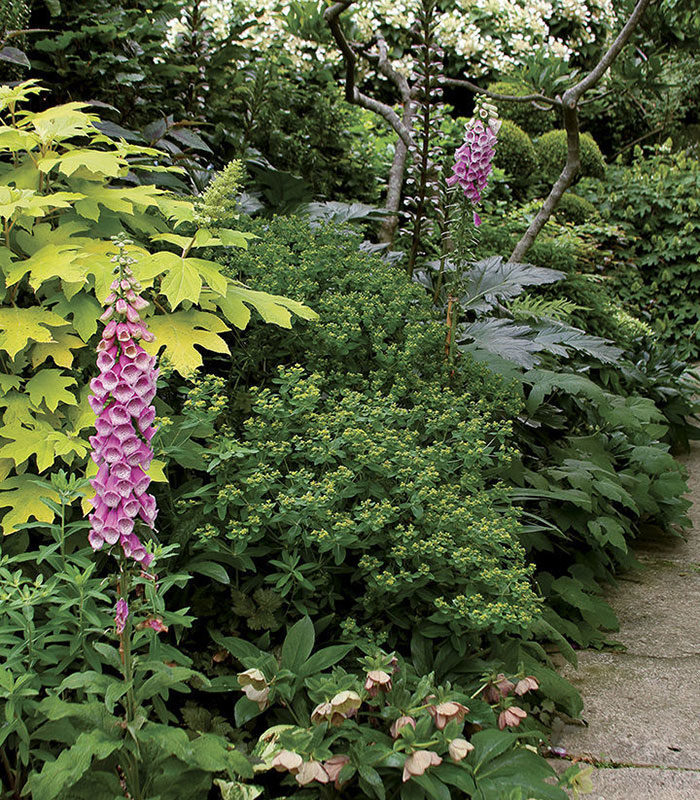
Whether I am visiting a public garden or in a landscape created by nature, I think about what makes these places special. I inevitably conclude that the gardens I love best deviate from the principles I was taught as a designer. And if I have learned one thing in more than 20 years of gardening, it is that breaking some of the more common rules—such as spacing properly, sticking to a single color scheme, and separating sun and shade plants—can create a truly unique and personalized garden.
One rule of garden design suggests that plants should be tiered—or layered—with tall plants in the back and shorter plants in front. To make a garden feel more natural and unexpected, however, I suggest placing tall and bold-leaved plants near the front or middle of a bed and interspersing shorter plants throughout. This allows the eye to flow to different areas, creating unexpected views around the plants and leading to interesting shadows and depth.
Rule 1: Always Space and Tier Plants
The rule of spacing plants can also be overrated. For a complex and intricate garden, I prefer a full look. This often results in planting shrubs and perennials closer than one might expect or that the nursery recommends. That said, it is important to maintain a close watch on thickly planted beds so that breaking this rule results in a tapestry of plants that weave into one another and not a chaotic mess. One way to do this is to prune selectively or remove plants if they become overgrown. Pruning plants—especially into topiaries—creates a striking contrast to what could become a junglelike look while also adding unanticipated architecture to the garden.

As I mature as a gardener, I better understand how color influences a garden, and have found that varying the color schemes from one area to another evokes different moods. This leads to a more exciting garden as a whole. My garden, for example, has four predominant color schemes: a green-and-white sidewalk garden with splashes of vibrant colors a calming green-and-white-only garden in the back, where I spend most of my time; a welcoming cool-color garden at the entrance to my house; and a hot-color garden along a driveway that links the sidewalk and back gardens. While these gardens differ from one another, they are connected by specific plants or a plant color.
The sidewalk garden, for example, is predominantly green and white with a few splashes of vibrant colors from plants such as pink foxglove (Digitalis purpurea cv., USDA Hardiness Zones 4–8) and golden-leaved ‘Little Honey’ oakleaf hydrangea (Hydrangea quercifolia ‘Little Honey’, Zones 5–9. At least one of the colors in this garden is repeated in the side garden.
The visitor’s garden at the entrance to my house reveals flowers of blue, pink, and purple, including a mix of delphiniums (Delphinium spp. and cvs., Zones 3–7) with foxgloves (Digitalis purpurea cvs., Zones 4–8). These cool-color flowers combine with white flowers in the area, and the effect is welcoming. Gray- and silver-foliage plants, such as honey bush (Melianthus major, Zones 8–11), command attention, and blue-leaved shrubs, like St. John’s wort (Hypericum frondosum, Zones 5–8), contribute to the spectrum of rich foliage and flower color.
By contrast, a driveway that I share with my neighbor evokes a sense of adventure, with its orange, magenta, and other hot colors. This area and the visitor’s garden are divided by an arbor planted with vines to separate the spaces.
Rule 2: Stick to One Color Scheme Throughout the Garden
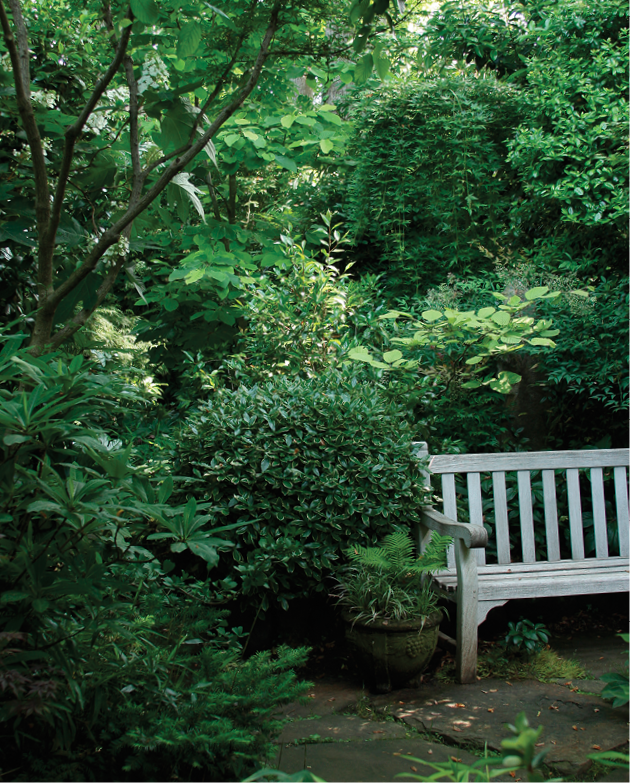
The back garden is primarily green and lush under a canopy of old hardwoods. Visitors comment on the peacefulness of this space, largely because they can rest their eyes from the intense colors of the driveway garden. Variegated plants, such as ‘Spider’s Web’ Japanese aralia (Fatsia japonica ‘Spider’s Web’, Zones 8–10) and variegated dogwood (Cornus controversa ‘Variegata’, Zones 6–9), combine with ‘Snowflake’ oakleaf hydrangea (Hydrangea quercifolia ‘Snowflake’, Zones 5–9) within the shade to illuminate the space. There are few flowers—and even those are in varying shades of green and white.
Varying the color scheme from garden to garden creates an unique experience within each space. Yet unifying the spaces with a similar plant or single color prevents the garden as a whole from becoming jarring.

With the exception of the driveway garden—where all plants are sun lovers—I mix sun and shade plants throughout my gardens. I have encouraged this unique blending through judicious pruning and proper plant placement. Twenty years ago, for example, during the early development of my garden, I planted many understory trees throughout the property. This was especially true in the back, where extant trees were more than 100 feet tall and failed to provide enough shade. I planted several species of Japanese maple to create an intermediate layer under the hardwoods. As the garden matured, however, these trees became too dense for underplantings to flower. Rather than remove them, I embarked on a practice of selective pruning to bring light into the space. Not only do understory plants now bloom beautifully in the back area but also the thinning of these trees allows deeper views into multiple areas.
Rule 3: Sun and Shade Plants Need to be Separated

Careful pruning also enabled me to combine sun and shade plants in the entrance garden. Sun lovers, such as ‘Newport Pink’ dianthus (Dianthus barbatus ‘Newport Pink’, Zones 3–9), are more intriguing when juxtaposed with shade plants, such as ‘Toyama-nishiki’ Japanese maple (Acer palmatum var. dissectum ‘Toyama-nishiki’, Zones 5–8) and variegated fragrant Solomon’s seal (Polygonatum odoratum ‘Variegatum’, Zones 3–8). The pruned trees provide protection for shade plants yet do not block the light for the plants that like sun. This combination of foliage and flowers in the sun is more interesting than a large swath of flowers typically found in a sunny area.

Although I did not intentionally set out to break these and other design rules when I began designing my gardens, I have come to realize that doing so is, indeed, a style of its own. Does this mean that all gardens need to abandon design principles? I don’t believe so. But to express individuality, gardeners might need to seek out new rules. In my case—and in my garden—that new rule is one of surprise.
Large Bold Plants Make a Statement in the Front of a Border
Placing tall, bold, or large-leaved plants in the front of a border creates surprise. Here are a few of my favorites—all of which serve as showstoppers in my gardens.
 |
 |
Bear’s BreechesName: Acanthus mollis Zones: 7 to 11 Size: 3 to 6 feet tall and wide Conditions: Full sun to partial shade; moist, well-drained soil |
‘Little Honey’ Oakleaf HydrangeaName: Hydrangea quercifolia ‘Little Honey’ Zones: 5 to 9 Size: 4 feet tall and wide Conditions: Full sun to partial shade; moist, well-drained soil |
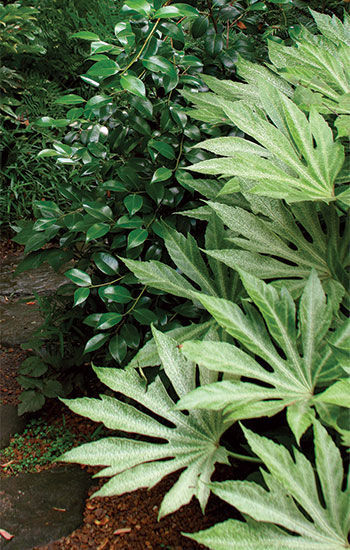 |
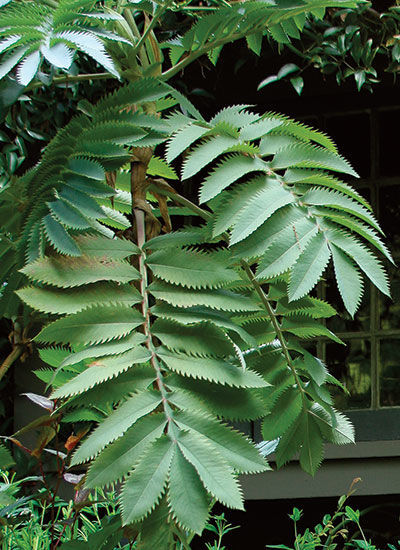 |
Honey BushName: Melianthus major Zones: 8 to 11 Size: 6 to 10 feet tall and 3 to 10 feet wide Conditions: Full sun; moist, well-drained soil |
‘Spider’s Web’ Japanese AraliaName: Fatsia japonica ‘Spider’s Web’ Zones: 8 to 10 Size: 5 to 12 feet tall and wide Conditions: Light, dappled shade; moist, well-drained soil |
David Ellis is the owner of Ellis Land Design, a design/build firm in Atlanta, Georgia.
Photos: Lynn Felici-Gallant
Fine Gardening Recommended Products

Pruning Simplified: A Step-by-Step Guide to 50 Popular Trees and Shrubs
Fine Gardening receives a commission for items purchased through links on this site, including Amazon Associates and other affiliate advertising programs.

ARS Telescoping Long Reach Pruner
Fine Gardening receives a commission for items purchased through links on this site, including Amazon Associates and other affiliate advertising programs.

DeWit Spork with Solid Socket
Fine Gardening receives a commission for items purchased through links on this site, including Amazon Associates and other affiliate advertising programs.

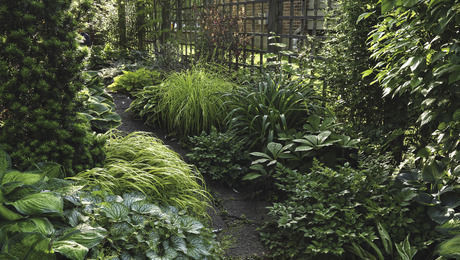

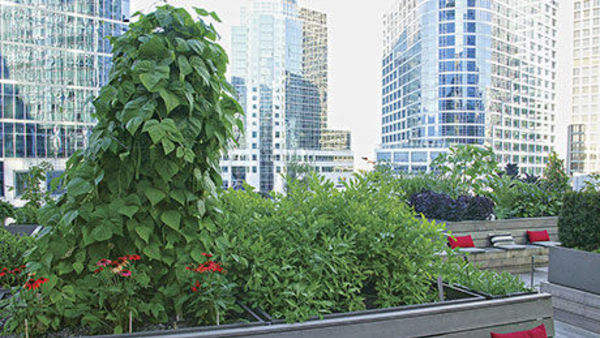
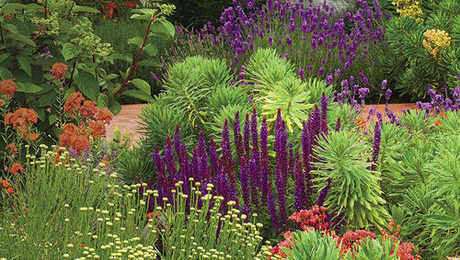













Comments
Log in or create an account to post a comment.
Sign up Log in